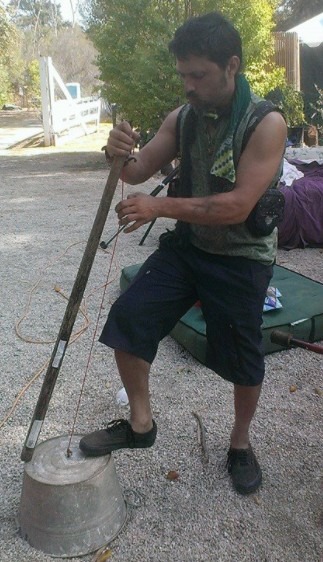
Back in the early 1900s, the washtub bass instrument was used by jug bands, prevalent in some African-American communities. Subsequently, in the 1950s, British skiffle bands used a washtub bass variant, which they called tea-chest bass. In the following year, US folk musicians have played the washtub bass in jug band influenced music. It was also that time when The Quarryman, consists of John Lennon and Paul McCartney, used a tea chess bass, as did several young bands in the 1950s.
This tea-chest bass is one of the washtub bass’s variations. However, unlike the washtub bass, which has a washtub as a resonator, the tea-chest bass uses a tea chest as its resonator. Also, the tea-chest bass uses a broomstick that is placed alongside the chest. One or more strings are stretched on the pole and plucked when played.
Moreover, several design variations of the washtub bass, specifically in the choice of resonators, are found in many parts of the world. With this, several names for the instrument have emerged. Some of these names are babatoni, bush bass, tulon, tingotalango, box bass, gas-tank bass, tanboumarengwen, and laundrophone, among others. Because of the washtub bass’s simplicity and affordability, one might be able to produce his or her own version of the instrument. Additionally, these factors were also the reason why modern-day builders are promoting modifications to the instrument’s basic designs. Nowadays, some washtub bass has fingerboard, electronic pickup, drumhead, and pedals.
In playing the washtub bass, performers could choose between two known styles. One option is to stand on the washtub bass’s rim with both feet. With this style, the player’s body will be much closer to the neck of the bass. It will also give him better control of the instrument. The other style is done by placing one foot on the rim of the washtub bass while the other foot is on the ground. One disadvantage is that this could be painful since only one foot will be holding down the rim. Nevertheless, it depends on the performer which style they’ll be comfortableusing.
According to some ethnomusicologists, the origin of the washtub bass can be traced back to the history of the ground harp or ground bow. These instruments are musical instruments that are shaped like a bow and classified as a chordophone. However, this early musical instrument was made out of animal skin that is stretched over a pit that served as a resonator. One of the examples of this was the ang-bindi, which the Baka people of the Congo had made. Meanwhile, as time goes by, the evolution of the washtub bass had led to other variations, including the dan bau of Vietnam and the gopichand of India. Interestingly, an electric one-string, amplified via using a pickup, had also emerged.
One of the notable washtub bass’ players was Will Shade, the vocalist of the Memphis Jug Band. During his career, Shade had recorded from the year 1920s up until his death in the year 1966. Kansas Joe McCoy, an American Delta blues singer, and composer, was also known for playing the washtub bass. He then also recorded with Arthur William Crudup. Aside from them, John B. Fritz Richmond, an American musician, was also one of the famous washtub bassists during his years. He was known to have recorded numerous recordings from America to Japan.
In addition, Donald Kachamba had also performed using the washtub bass. In fact, he had associated the instrument in performing with his band, the Kachamba Brothers. Also, Brian Ritchie, Ley Claypool, John Elroy Sanford, also known as Redd Foxx, and Stuart Alden Cook, were among other notable players of the washtub bass.

